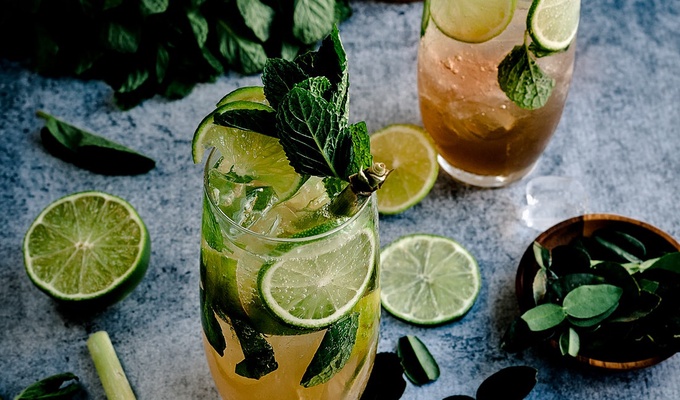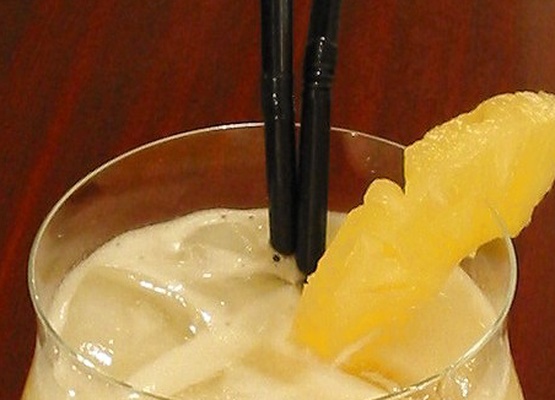A non-alcoholic mixed drink is a cocktail-style beverage made without alcoholic ingredients.
Also called "zero proof" drinks, the non-alcoholic drink dates back to the earliest days of the cocktail age, appearing as 'Temperance drinks' in the first American cocktail books, including Jerry Thomas's Bar-Tenders Guide (1862). Merriam-Webster cites the first mention of 'mocktail' as appearing in 1916.
While the name of the non-alcoholic drink, as well as its style, has evolved over time, it is often a reflection of cocktail culture at large. The 1980s saw the resurgence of a 'mocktail' movement with often sugary drinks. Following the sophistication of cocktail culture of the 2000s, the zero proof drink also became more refined.
Mocktails, an portmanteau for "mock cocktails", are festive, non-alcoholic party drinks. The word "mock" implies a facade of the alcoholic cocktail without any of the alcoholic content. In the 2000s, it has become so popular that it even finds its place on the cocktail menu in many restaurants and bars, especially temperance bars. According to Mintel, alcohol-free mixed drinks grew 35% as a beverage type on the menus of bars and restaurants from 2016 to 2019 in the US. In 2019, "The Providence Journal" reported that there were at least 4 bars in New York City that served mocktails only.
Zero proof drinks can be made in the style of classic cocktails, like a non-alcoholic gimlet, or can represent a new style of drink altogether. There are innumerable lists across the Internet that detail unique mocktail recipes that get even more creative than those listed below. The popularity of drinking abstinence programs like Dry January, coinciding with the rise of the health and wellness culture has pushed non-alcoholic drinks to wider acceptance. Like the vegetarian food movement or the popularity of oat milk, zero proof drinks are now seen as valid choices for all types of drinkers.



